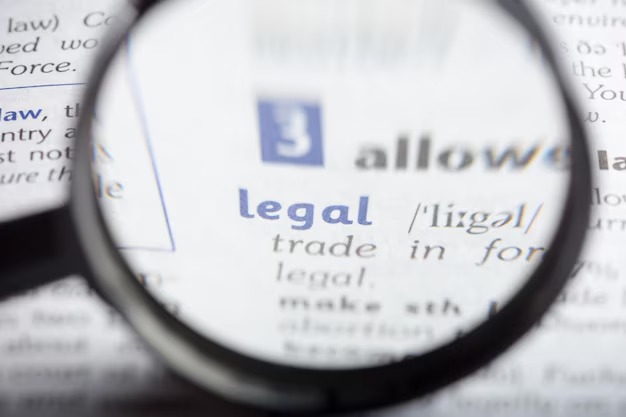
Kroger co Albertsons Dodge Overcome Weak Merger Consumer Antitrust Lawsuit
Kroger co Albertsons Dodge Overcome Weak Merger Consumer Antitrust Lawsuit
In the ever-evolving landscape of the retail industry, two prominent players have encountered significant judicial scrutiny regarding their operational strategies. The recent threats of legal action illustrate the complexities that arise within competitive markets, particularly when it comes to mergers and acquisitions. This situation highlights the intricate balance between maintaining a robust business model and adhering to regulatory standards.
The parties involved faced allegations aimed at challenging their market practices, which, if upheld, could have led to substantial changes in their operational frameworks. However, recent developments indicate that these entities have managed to circumvent potential legal pitfalls, enabling them to continue their growth trajectories without major interruptions. The implications of this outcome resonate throughout the sector, as it underscores the ongoing tension between enterprise ambitions and legal accountability.
As the retail sector grapples with shifting consumer behaviors and economic pressures, the resilience displayed by these companies serves as a testament to their strategic positioning. Moreover, this situation invites further discussion on the regulatory environment and its efficacy in addressing market dynamics. By navigating these challenges, the involved entities not only protect their interests but also set a precedent for others operating in a similar space.
Kroger and Albertsons Antitrust Case Overview
This section delves into the legal proceedings involving two major players in the grocery retail industry. The case revolves around competition concerns that arose due to a merger, which prompted scrutiny from regulatory bodies. Allegations were made that such a consolidation could negatively impact market dynamics and consumer choices.
Throughout the process, the firms presented their arguments, emphasizing potential benefits such as increased efficiency and improved customer service. They sought to counter claims suggesting that the merger would limit competition and create monopolistic practices.
In recent developments, it appears that the action faced challenges in proving its points effectively. The presiding authorities assessed the validity of the arguments put forth and ultimately decided against proceeding with comprehensive measures that would disrupt the proposed business arrangement.
The outcome highlights the complexity of regulatory frameworks, as well as the balancing act between fostering competition and allowing strategic business operations. The situation serves as a notable example within the ongoing discourse regarding market structure and consumer protection.
Analysis of Consumer Antitrust Laws
This section delves into the framework surrounding regulations aimed at promoting market competition and protecting consumer interests. Understanding these principles is crucial for assessing how firms navigate legal challenges and ensure fair practices within their industries.
Key Concepts in Market Regulation
- Market Concentration: A critical aspect involves examining how the consolidation of businesses can affect pricing and availability of goods.
- Competition Preservation: Ensuring a diverse marketplace prevents monopolistic behavior and promotes innovation.
- Regulatory Bodies: Various government entities are responsible for enforcing these regulations and investigating potential violations.
Legal Challenges and Precedents
- Understanding past rulings provides context for current legal interpretations.
- Analyzing the impacts of significant cases offers insights into how businesses might adapt their strategies.
- The balance of enforcement versus market freedom remains a contentious topic among policymakers.
Exploring these facets helps paint a clearer picture of the evolving landscape of market regulation and its implications for both companies and the public. As practices change, so too must the frameworks that govern them, ensuring they remain relevant and effective.
Impact of Recent Legal Developments
The resolution of recent legal challenges has significant implications for major players in the retail sector. The outcome not only shapes the competitive landscape but also influences consumer behavior and market dynamics. Stakeholders must remain vigilant as these developments could drive changes in strategies and operations across the industry.
Market Confidence and Investment
The ability to navigate legal hurdles enhances confidence among investors. When high-profile entities emerge unscathed from legal scrutiny, it typically leads to:
- Increased capital inflow due to improved market perception.
- Enhanced stock performance as investor sentiment grows favorable.
- Opportunities for expansion as firms feel empowered to take calculated risks.
Consumer Trust and Brand Loyalty
The outcome of such legal proceedings can also affect consumer perceptions. When companies are seen as successfully managing legal challenges, it may result in:
- Strengthened trust among shoppers who value stability.
- A boost in brand loyalty as customers rally behind perceived resilient businesses.
- Potential shifts in shopping habits as consumers seek reliable alternatives in the marketplace.
Overall, these developments reveal the intricate relationship between legal affairs and business performance, highlighting the need for companies to strategically engage with the legal landscape.
Market Reactions and Shareholder Responses
The recent legal developments surrounding prominent retail giants have led to significant reactions in financial markets, influencing investor sentiment and stock performance. As uncertainties dissipate, both market players and stakeholders are closely monitoring the situation to gauge its impact on future growth prospects and competitive landscape.
Market analysts have observed notable fluctuations in stock prices, reflecting the mixed sentiments among investors:
- Positive Outlook: Some investors express optimism, believing these events will pave the way for a more favorable competitive environment and potential market consolidation.
- Short-Term Volatility: Conversely, others remain wary, concerned that ongoing scrutiny could lead to unforeseen challenges, impacting profitability and operational strategies.
Shareholder reactions have varied as well:
- Many are urging company leadership to maintain transparent communication regarding future business strategies and compliance measures.
- Others are advocating for a more aggressive approach to expansion and market positioning, capitalizing on the existing market conditions.
- A segment of investors is calling for a reassessment of risk management practices, seeking assurances that potential regulatory hurdles are effectively addressed.
As conversations continue in boardrooms and on trading floors, the overall response from the investment community remains crucial in shaping the future trajectory of these retail entities. Stakeholders are keenly interested in strategies that will enhance shareholder value while navigating the complex regulatory landscape.
Future Implications for Retail Competition
The recent developments in the retail sector have sparked a significant discussion regarding the landscape of competition among grocery chains. As the market evolves, several factors will influence the dynamics between various players, potentially reshaping consumer experiences and business strategies.
- Increased Market Consolidation: The trend towards larger entities merging may lead to fewer competitors in the space, impacting pricing and customer service.
- Enhanced Pricing Strategies: With reduced rivalry, larger chains might adopt aggressive pricing models, influencing smaller retailers to adapt or exit the market.
- Focus on Innovation: Major organizations could invest more in technological advancements, creating a disparity in service offerings compared to smaller competitors.
These elements will shape how consumers interact with grocery stores and may lead to a redefinition of value propositions in the industry.
- Consumer Behavior Trends: Shifts may occur as shoppers seek convenience and technology-driven solutions, pushing businesses to realign their offerings.
- Regulatory Scrutiny: As market power consolidates, regulatory bodies may increase monitoring to ensure fair practices.
- Local Store Resilience: Smaller operations could focus on community engagement and personalized service as a means to preserve their market share.
The overall future competition landscape will hinge upon how companies respond to these challenges and opportunities, ultimately influencing market accessibility and consumer choice.
Strategic Moves by Kroger and Albertsons
Recent developments have showcased the calculated actions taken by two prominent grocery chains as they navigate regulatory challenges and adapt to changing market conditions. Their strategic decisions highlight a commitment to maintaining competitive advantages while addressing potential legal hurdles that may arise from their business operations.
Collaborative Initiatives
Both entities have undertaken collaborative initiatives that focus on enhancing operational efficiencies and improving customer experiences. By pooling resources and sharing best practices, these companies aim to optimize supply chain management and reduce costs. Such partnerships can lead to a significant improvement in service offerings, thus attracting a broader customer base.
Market Adaptation
In addition to collaboration, there has been a notable emphasis on adapting to market dynamics. The companies have been proactive in analyzing consumer preferences and shifting trends, allowing them to adjust their product lines and promotional strategies accordingly. This responsive approach not only solidifies their market presence but also fosters customer loyalty, ultimately contributing to long-term sustainability.
Overall, the strategic maneuvers employed by these grocery giants underscore a forward-thinking mindset aimed at overcoming challenges while capturing new opportunities in a competitive landscape.
Q&A: Kroger albertsons dodge weak consumer antitrust lawsuit
What is the role of the plaintiff in antitrust cases involving the FTC?
The plaintiff in antitrust cases involving the FTC is typically a party that alleges that a monopoly has harmed competition and consumers. They seek remedies to restore competitive conditions in the market.
How does the FTC address allegations of monopoly practices?
The FTC investigates allegations of monopoly practices by gathering evidence, analyzing market conditions, and determining whether a company’s actions violate antitrust laws. If necessary, they may take legal action against the alleged monopolist.
What are the implications of a $24.6 billion fine imposed by the FTC on a company?
A $24.6 billion fine imposed by the FTC can have significant financial implications for a company, potentially affecting its stock price, market position, and ability to operate. It also serves as a deterrent to other companies considering monopolistic practices.
How does the FTC define a monopoly in its investigations?
The FTC defines a monopoly as a situation where a single company dominates a market to the extent that it can control prices and exclude competition. This definition is central to their investigations and enforcement actions.
What are some examples of cases where the FTC has acted against monopolies?
The FTC has acted against monopolies in several high-profile cases, such as those involving tech giants accused of anti-competitive behavior. These cases often involve extensive investigations into market practices and consumer impact.
How can plaintiffs prove that a company has engaged in monopolistic behavior?
Plaintiffs can prove that a company has engaged in monopolistic behavior by demonstrating anti-competitive practices, such as predatory pricing, exclusive contracts, or mergers that substantially lessen competition in the market.
What is the significance of the FTC’s role in maintaining market competition?
The FTC’s role in maintaining market competition is crucial because it helps prevent monopolies from forming, ensuring that consumers have choices and fair prices. This regulatory oversight promotes innovation and healthy competition.
How do fines imposed by the FTC affect consumer trust in companies?
Fines imposed by the FTC can significantly affect consumer trust in companies. A substantial fine, such as $24.6 billion, may lead consumers to question the integrity of the company and its commitment to fair business practices.
In what ways can a monopoly negatively impact consumers?
A monopoly can negatively impact consumers by limiting choices, raising prices, and reducing the quality of products or services. Without competition, there is less incentive for innovation and improvement in the market.
What legal recourse do plaintiffs have if they believe they have been harmed by a monopoly?
Plaintiffs who believe they have been harmed by a monopoly can file lawsuits seeking damages, injunctions against the monopolistic behavior, or both. They may also report their concerns to the FTC for further investigation and potential action.
In a recent antitrust complaint, what concerns were raised regarding the Kroger-Albertsons merger?
The antitrust complaint raised concerns that the Kroger-Albertsons merger would reduce competition in the grocery market, potentially leading to higher prices and fewer choices for consumers.
What did Reuters report about the district court’s involvement in the Kroger-Albertsons merger case?
Reuters reported that a district court was set to scrutinize the antitrust concerns surrounding the Kroger-Albertsons merger, with a focus on whether it would violate antitrust laws.
How did the federal court respond to the request for a preliminary injunction against the merger?
The federal court, during a recent hearing, indicated that it would consider the request for a preliminary injunction to halt the merger until further analysis could be conducted on its impact.
What did the district judge say about the evidence presented in support of the antitrust complaint?
The district judge, Chhabria, lambasted Joseph Alioto for providing no evidence or economic analysis that could explain how the merger would affect any one of them personally or the grocery market overall.
What role does the Federal Trade Commission (FTC) play in cases like the Kroger-Albertsons merger?
The FTC plays a crucial role in reviewing mergers for potential antitrust violations, and its findings can significantly influence federal agency action regarding approval or disapproval of such mergers.
How might the merger of Albertsons and Kroger impact prices in the grocery market?
Experts allege that the merger could lead to price increases due to reduced competition, as Kroger’s umbrella would encompass more stores, potentially allowing them to raise prices without fear of losing customers.
What did the ongoing litigation reveal about CS Wholesale Grocers’ position on the merger?
The ongoing litigation revealed that CS Wholesale Grocers expressed concerns that the merger would underperform in terms of competition and could lead to harmful practices within the grocery market.
Can you explain what a class action lawsuit entails in the context of antitrust litigation?
A class action lawsuit in antitrust litigation allows a group of individuals affected by alleged anticompetitive practices, such as price increases from the Kroger-Albertsons merger, to collectively seek damages and challenge the merger’s legality.
What were some of the key points made by Chhabria during the recent hearing on the merger?
Chhabria asked for more detailed economic analysis and expressed that without substantial evidence, it was impossible to assess how the merger would impact competition in the grocery market.
What potential effects of the merger were highlighted during discussions about its regulatory oversight?
Discussions about regulatory oversight highlighted that the merger could lead to a concentration of market power, which may reduce competition and ultimately harm consumers through higher prices and fewer choices.








